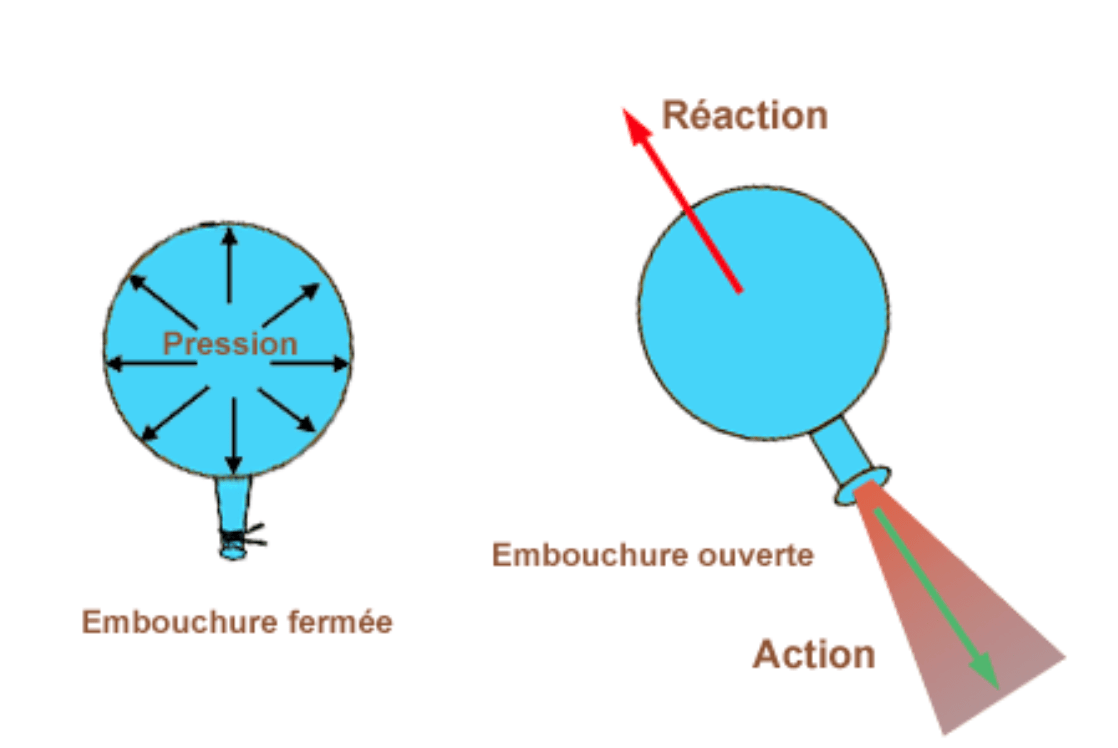General operating principle
The principle of the propulsion of jet aircraft is based on the third law set out by Issac Newton in 1687 in the first volume of his Philosophiae Naturalis Principia Mathematica: any body A exerting a force on a body B undergoes a force of equal intensity , but in the opposite direction, exerted by the body B.
Action reaction
The reaction is the consequence of an action. Take as an example a balloon that is inflated. The wall of the balloon undergoes a certain pressure and expands. If the balloon is well closed the resultant pressure forces inside the balloon is zero. (left figure)

Now open the mouth of the balloon, (right figure) the escaping gases create the propulsive energy (action) and cause the movement of the balloon (reaction as long as the internal pressure of the gases is sufficient).
We can distinguish two categories of thrusters:
Propellants that take their fuel (kerosene or other) but use the ambient air as oxidizer:
- ramjets
- the pulse jet engines
- turbojet engines
- propeller engines (turboprops, helicopters)
And propellers that take their fuel (liquid hydrogen or kerosene etc ...) and their own oxidant (liquid oxygen or other)
- rocket engines.
Principle of operation
The operation of jet engines is based on the principle of action-reaction: it is to accelerate a mass of air to create a thrust force which, by reaction, will propel the aircraft. All turbojet architectures are based on the same 3 steps, namely: Compression - Combustion - Relaxation.
At startup, compressed air supplied by the APU (auxiliary power unit) or by a pneumatic group on the ground rotates a compressor that sucks and compresses the ambient air to send it to one or more combustion chambers. At the same time, a pump driven via a gearbox or AGB accessory gearbox (in English) injects fuel (kerosene).
This mixture compressed air / fuel is ignited in this or these rooms by a candle or several candles (igniters), which allows to greatly expand the gas.
These gases pass through one or more turbines which drive with a rotary shaft the compressor and accessories essential to the operation of the reactor (fuel pump, alternator etc ...), which ensures continuity of movement . The gases then escape into a nozzle of convergent section in order to accelerate them out.
After a few seconds, when the rotation speed is sufficient, the starter is uncoupled and the spark plug is extinguished. The engine can then operate autonomously to reach its idle speed.